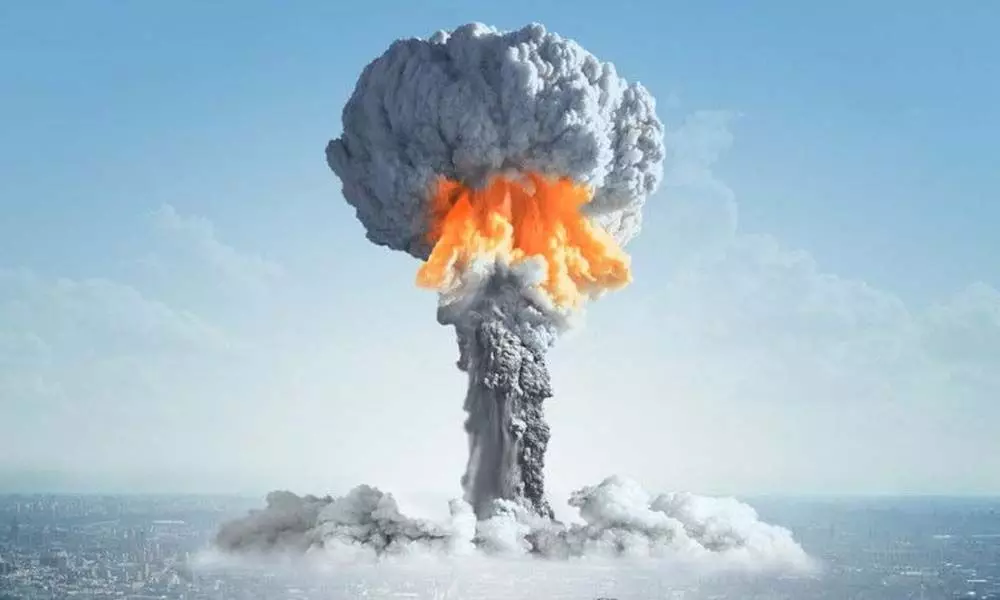Global nuclear arsenals swell as States continue to modernise
Despite overall decrease, the estimated number of nuclear weapons currently deployed with operational forces increased to 3825, from 3720 last year
image for illustrative purpose

The nine nuclear-armed states - the United States, Russia, the United Kingdom, France, China, India, Pakistan, Israel and the Democratic People's Republic of Korea (North Korea) - together possessed an estimated 13,080 nuclear weapons at the start of 2021. This marked a decrease from the 13,400 that SIPRI estimated these states possessed at the beginning of 2020. Despite this overall decrease, the estimated number of nuclear weapons currently deployed with operational forces increased to 3825, from 3720 last year. Around 2,000 of these, nearly all of which belonged to Russia or the USA, were kept in a state of high operational alert.
While the USA and Russia continued to reduce their overall nuclear weapon inventories by dismantling retired warheads in 2020, both are estimated to have had around 50 more nuclear warheads in operational deployment at the start of 2021 than a year earlier. Russia also increased its overall military nuclear stockpile by around 180 warheads, mainly due to deployment of more multi-warhead land-based intercontinental ballistic missiles (ICBMs) and sea-launched ballistic missiles (SLBMs). Both countries' deployed strategic nuclear forces remained within the limits set by the 2010 Treaty on Measures for the Further Reduction and Limitation of Strategic Offensive Arms (New START), although the treaty does not limit total nuclear warhead inventories.
'The overall number of warheads in global military stockpiles now appears to be increasing, a worrisome sign that the declining trend that has characterized global nuclear arsenals since the end of the cold war has stalled,' said Hans M Kristensen, Associate Senior Fellow with SIPRI's Nuclear Disarmament, Arms Control and Non-proliferation Programme and Director of the Nuclear Information Project at the Federation of American Scientists (FAS). 'The last-minute extension of New START by Russia and the USA in February this year was a relief, but the prospects for additional bilateral nuclear arms control between the nuclear superpowers remain poor.'
Russia and the USA together possess over 90 per cent of global nuclear weapons. Both have extensive and expensive programmes under way to replace and modernize their nuclear warheads, missile and aircraft delivery systems, and production facilities.
'Both Russia and the USA appear to be increasing the importance they attribute to nuclear weapons in their national security strategies,' said Kristensen.
Other nuclear-armed states investing in future capabilities
All the other seven nuclear-armed states are also either developing or deploying new weapon systems or have announced their intention to do so. The UK's 'Integrated Review of Security, Defence, Development and Foreign Policy', published in early 2021, reversed a policy of reducing the country's nuclear arsenal and raised its planned ceiling for nuclear weapons from 180 to 260.
China is in the middle of a significant modernization and expansion of its nuclear weapon inventory, and India and Pakistan also appear to be expanding their nuclear arsenals.
North Korea continues to enhance its military nuclear programme as a central element of its national security strategy. While it conducted no nuclear test explosions or long-range ballistic missile tests during 2020, it continued production of fissile material and development of short- and long-range ballistic missiles.
'The entry into force of the Treaty on the Prohibition of Nuclear Weapons in early 2021 highlights the growing divide between the nuclear-armed states, which are all investing in the long-term future of their nuclear forces, and other countries that are impatient to see progress on nuclear disarmament promised by the Nuclear Non-Proliferation Treaty,' said Matt Korda, Associate Researcher with SIPRI's Nuclear Disarmament, Arms Control and Non-proliferation Programme and Research Associate with the FAS Nuclear Information Project.
India's spending of $72.9 billion, an increase of 2.1 per cent in 2020, ranked it as the third highest spender in the world. Russia's total military spending was $61.7 billion. This was 2.5 per cent higher than in 2019, but 6.6 per cent lower than the initial budget for 2020, reflecting the far-reaching economic consequences of Covid-19. The gap in spending included a shortfall of around $1 billion probably linked to the State Armament Programme. The fifth biggest spender, the United Kingdom, raised its military expenditure by 2.9 per cent in 2020. This was the UK's second highest annual growth rate in the period 2011–20, a decade that until 2017 was characterized by military spending cuts.

